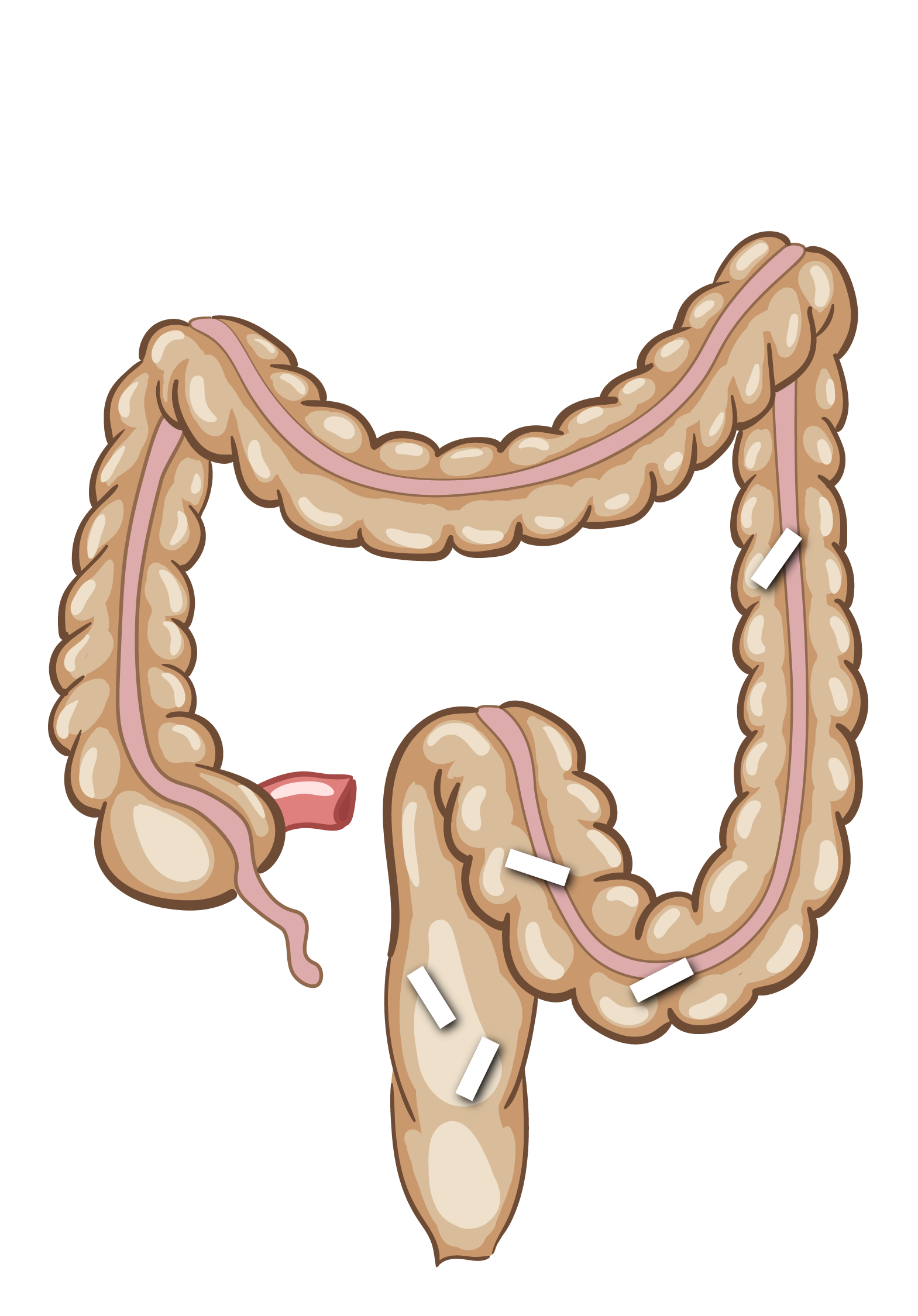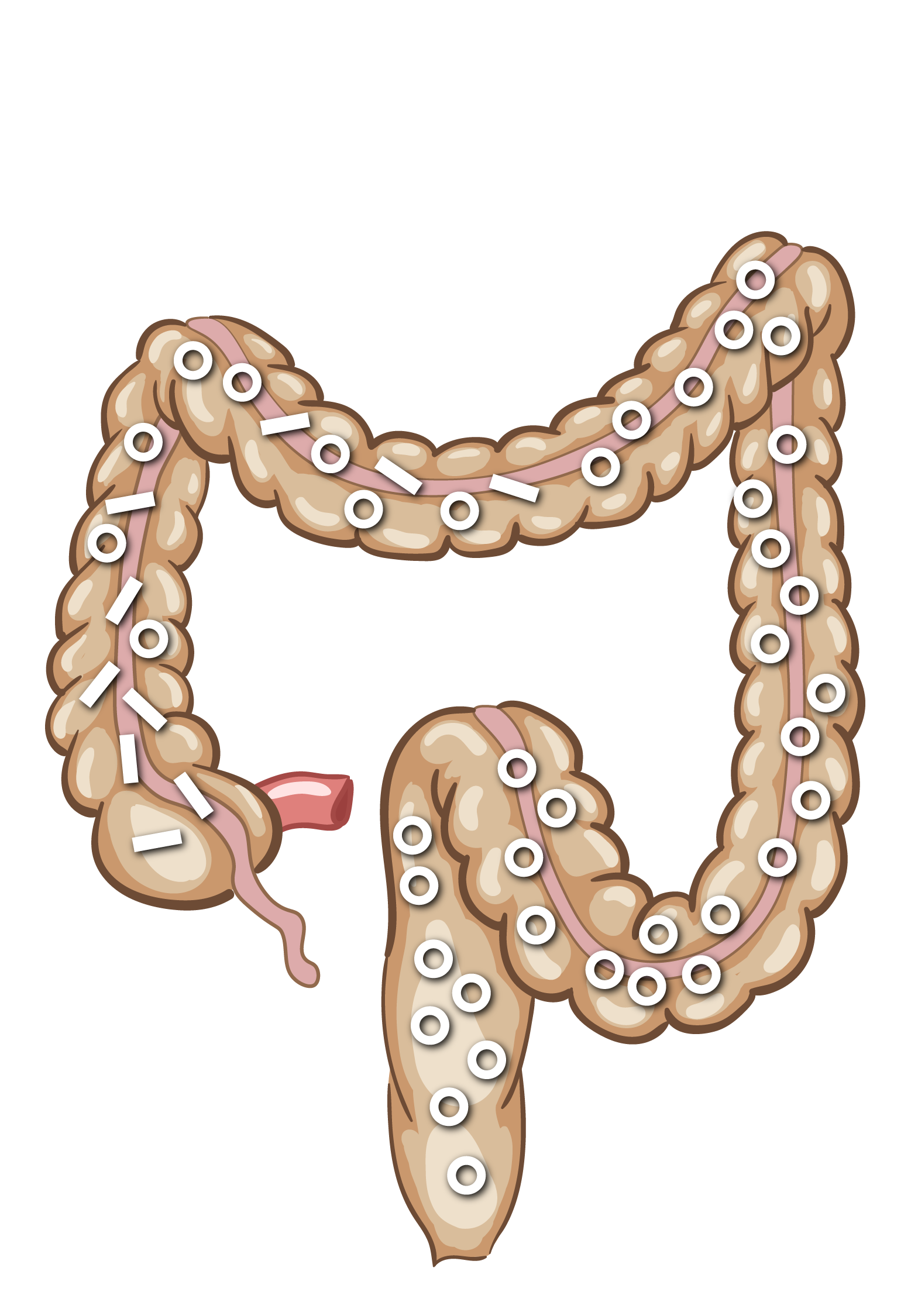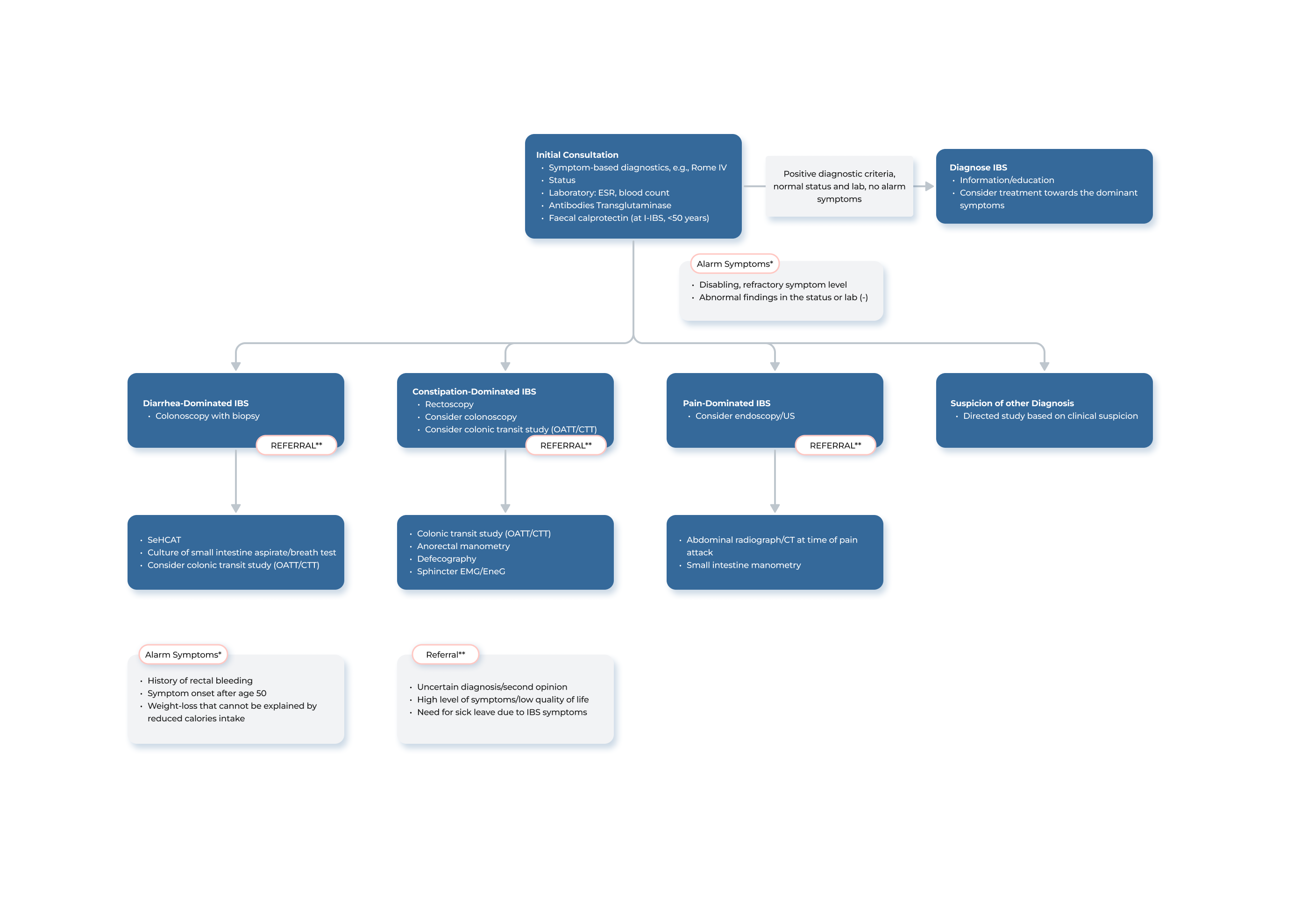Hälso- och sjukvårdspersonal
Vi är stolta över att erbjuda state-of-the-art röntgentäta markörer, Transit-Pellets, som är designade för att förbättra bedömning och behandling av motilitetsstörningar som förstoppning, diarré och Irritable Bowel Syndrome (IBS). Våra markörer tillverkas enligt Transit-Pellets method. Dessutom tillhandahåller vi en online-standardiserad kolontransitstestrapport som är utformad för behandlande läkare och radiologer.
Validerad metod och säkra markörer för kolontransit för kvantitativ utvärdering av total och segmentell kolontransit
Transit-Pelletsmetoden och Transit-Pellets radiopaque markers kan användas för följande:
- Mäta snabb, normal och långsam kolontransit
- Särskilja mellan långsam och normal transit vid förstoppning
- Identifiera segmentell transitdysfunktion hos patienter med förstoppning
- Särskilja mellan normal och snabb transit vid diarré
- Identifiera behandlingseffekter hos patienter med kronisk förstoppning
Ett kolontransittest med Transit-Pelletsmetoden, också känd som Abrahamsson method, och Transit-Pellets radiopaque markers kan fastställa transitrubbningarnas svårighetsgrad. Testet kan spela en viktig roll för att fastställa behovet av andra undersökningar, välja lämplig behandling och bedöma långtidsprognosen. Testresultaten kan användas som vägledning för att fatta beslut inom dessa områden.
Referenser finns i avsnittet VALIDATED METHOD.
Bild av Transit-Pellets-markörens förflyttning

Questions?
Contact Us. We’re here to help!
Diana Nyström
+46 (0) 8-460 072 06
diana.nystrom@medifactia.com








